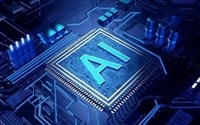
Edge AI refers to the deployment of AI algorithms and models to edge devices, such as PMBS3906 sensors, cameras, smart phones, IoT devices, etc., to achieve real-time, low latency data processing and decision-making capabilities. The prospect of edge AI is huge and will have a profound impact on various industries and fields.
1. Real time data processing: Edge AI will be able to perform real-time data processing and analysis locally on the device, reduce data transmission delay and network load, and improve data privacy and security. For example, in the field of automatic driving, edge AI can process the perception data around the vehicle in real time, reduce the dependence on the cloud, and improve the speed and accuracy of decision-making.
2. Privacy protection: Edge AI can process data locally on the device, reduce data transmission to the cloud, and better protect users' privacy. Especially for some applications involving personal privacy and sensitive data, such as healthcare and financial fields, edge AI can provide better privacy protection and data security.
3. Edge computing capability improvement: With the improvement of edge device processing capability and hardware progress, edge AI will be able to perform more complex computing and model training locally. This will allow the device to perform advanced image recognition, speech recognition, natural language processing and other tasks offline, providing more intelligent and practical functions.
4. Wider application scenarios: Edge AI can be applied to various industries and fields, such as smart home, smart factory, smart city, intelligent transportation, etc. It can realize the intelligence and independent decision-making of intelligent devices, and improve the working efficiency and performance of devices. For example, in smart home, edge AI can realize voice control, face recognition, intelligent security and other functions to improve the intelligence of home.
5. Reduce cloud computing pressure: Edge AI can transfer some computing and reasoning tasks from the cloud to the local device, reducing the computing pressure and energy consumption of cloud servers. This will make cloud computing more efficient and sustainable, while reducing the demand for network bandwidth and latency.
6. Adaptive learning and improvement: Edge AI can realize adaptive learning and improvement through interaction with devices and data feedback. The device can independently adjust and improve the algorithm and model according to the user's needs and behavior mode, so as to provide more personalized and efficient services.
However, edge AI also faces some challenges and difficulties:
1. Limited resources: edge devices usually have limited computing power, storage space and energy supply. Therefore, how to implement efficient edge AI algorithms and models in resource constrained environments is a challenge.
2. Data security and privacy: Edge devices usually store and process a large amount of personal and sensitive data, such as face images, voice recordings and location information. Therefore, how to ensure the security and privacy of data has become an important issue, and appropriate data encryption and security measures need to be taken.
3. Optimization of algorithms and models: edge devices have limited computing resources, so algorithms and models need to be optimized to reduce computing and storage requirements. This requires close cooperation between algorithm engineers and hardware engineers to carry out collaborative design of algorithms and hardware.
In short, edge AI has great prospects and potential, which will bring revolutionary changes to various industries and fields. With the popularization of edge devices and technological progress, edge AI will become an important part of the next generation of AI technology, providing users with more intelligent, efficient and secure services.

